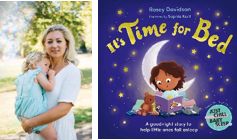
The rapid spread of the coronavirus has meant events moving very quickly indeed. I think we all knew, deep down, that schools would close eventually, but I don’t know about you, I thought we would at least get to the Easter holidays. My children were due to go off on their Easter break at the end of March, so we were almost there, but not quite.
Missing out on important exams.
My eldest is part of an historical year group – the ones who didn’t sit their GCSEs. It’s incredible when you think about it. Her school do the RS exam in Year 10, so that’s one at least. My daughter was doing art and textiles and just managed to get in her final art assessment last week. So that’s two. The textiles assessment was today and tomorrow and the school were going to bring them in to do it, but decided against it at the last minute. It’s just too risky to have them in now. We’re at that point.
So how do we keep them motivated at home?
I spoke to three friends last week who all home educate their children. We recorded the conversation on Zoom, so you can watch it if you want to (it’s on my Facebook page). My main take-out from this conversation was that what we are being asked to do, as parents, is quite different to what those who currently home educate actually do. We are affectively being asked to keep school going, whereas they follow their own path and it’s very much a child-led thing.
It’s important we put our mental health first.
Not only are we worried about what is going on in the world, we’re also concerned with what will happen to our jobs. We don’t need the added stress of trying to educate our children.
If what the school is asking you to do is not working – don’t do it. As simple as that sounds, it’s the best advice you can take. Contact your child’s school and tell them you’re struggling. We are all entering a period of uncertainty and it’s a case of trial and error at the moment.
If you have young children, don’t stress about their academic education. There are so many other things they can learn about life in general.
Today, my eleven-year-old son decided he was going to stick to his usual timetable. First on the agenda for this morning was DT, but sometimes they do art or cookery during this time. He decided to make some biscuits.
Before I had come downstairs, I had been asked so many questions, he was out of breath from coming up and down the stairs. I told him to stop and think about it for a moment, before coming straight to me. I told him this unique time was an opportunity to make mistakes and find out for yourself how things work and how to do things (you can have that one if you like!). As a parent (one like me who tends to get involved a little too easily), it meant stepping away from the kitchen and leaving him to it, ignoring the noises, ignoring the mess – I only helped him chop hazelnuts as we do not need accidents at this moment in time.
This is a great time for our children to use their own initiative and imagination to boost the boredom.
I nurture creativity with the work that I do with children at my Storymakers Writing Club. It may be based around writing, but the skills required to come up with an idea, organise your thoughts into a logical order and execute them, are all transferable, as is the ability to use the imagination and come up with creative solutions. We need our children to be more like this anyway. Far too often, the structure of school squashes this side of them down. There’s very little time for free thinking and creativity due to the constraints of the curriculum.
Not anymore. Not for the foreseeable future anyway.
My middle daughter, being in Year 8, has been asked to use Firefly (the school CRM), along with Microsoft Teams, for virtual lessons. I think the idea is that they will turn up to school (virtually) and follow the timetable as far as is possible. We will see how that pans out. For my son, he’s been given an example timetable he might wish to follow, or he can use his usual school one. Alternatively, he can come up with his own. He’s been assigned a personal tutor, who will be checking in with him most days.
Whatever you decide, the trick is to keep up the momentum.
I am grateful that the sun is shining, because if all else fails, and you have a garden or a patio or a patch of space out the front, that they can get outside for some fresh air. What better than to develop core strength and to hone both fine and gross motor skills than through playing. These are skills that will transfer to their writing, believe it or not and they’re often neglected or poorly developed because they’re not developed fully. I see that all the time.
Try not to despair. You are not alone and you will find that if you get on to social media. A lot of people, myself included, are speaking live every day, to check in. Doing video calls with friends is also a life-line.
You are not on your own. Even if it may feel that way.
5 ways parents can help children come up with a story idea
Many children have no problem coming up with a story idea. Others can think of ideas, but struggle to write them down. Then there are those who not only find coming up with ideas an arduous task, they are reluctant to write at all.
I’ve met all these types of children at my creative writing club, Storymakers. And as a writer, myself, I know it isn’t always easy to come up with ideas. It’s not as though you can flick a switch and a story idea will just pop into your head. Sometimes, the harder you try to think of something, the more difficult it becomes.
Author, Elizabeth Gilbert, in her book, Big Magic, talks of story ideas as though they are spiritual entities, roaming about the universe, waiting for the right person to write them down. She even cites examples of poets, musicians and writers who describe these moments when an idea literally pops into their head.
Indeed, I’ve had a similar experience recently, where a story idea won’t seem to leave me alone. I’m not sure whether to believe that it has particularly chosen me as the person most suitable to write it (even though I would love that to be true), but one thing I do believe, is that the idea was stimulated, in part, from a recent talk I went to, along with a book I’m currently reading.
We have to nurture our creative minds by giving them stimuli from which ideas can grow. It is the literal food for thought.
We cannot expect our children to just come up with ideas out of the blue, so the first and most important thing you can do to help them is to make sure they read widely. Most, if not all, books are based on stories that have already been written, in one way, shape or form. No story is truly unique, just a different aspect or way of looking at things.
Reading fires the imagination, as well as widening vocabulary and helping children to gain a good grasp of story structure.
If your child is not an avid reader, please consider reading to them, or try audio books. I have reluctant readers myself, so I understand the difficulties and have written of ways to help with this in previous posts. If you’re stuck for ideas, try some of mine first.
To help them come up with story ideas, though, here are some of my favourite activities:
1. Story cubes or dice
Children tend to love anything tactile, so using story cubes, or dice for a roll-a-story activity is a great way to help get them started with an idea. What I love about doing this, is it gives the children a character, a setting and a story problem and I always find that ideas are flowing almost straight away.
2. Images
I look for unusual images all the time, or if I’m out and about, and see something unusual, I will snap it. I like to get the children to tell me what they can see. There is no right or wrong answer, as everyone sees things in their unique way and the great thing about this is it starts a discussion that very soon leads to the formation of an idea.
3. Random objects
You can take any object and apply the words ‘what if’ to it and very soon, you go from the ordinary to the extraordinary. Even the most seemingly boring object can suddenly become interesting and from this, you can move on to who might be using this object, where might they be and discussion of a possible story problem.
4. Map it out
This is a great one for visual learners. Get them to draw a map with three major landmarks, or hurdles that the character would need to pass to get to the final destination. Who will the character be and what are they searching for? What will happen at each of these points?
5. Re-write it
As I said, most stories have been written before, in one way or another. Why not get your child to write a new version of their favourite story? This could take the form of a complete re-write, a different ending, or a re-write from a different point of view. For example, how about the tale of the three billy goats gruff from the point of view of the troll? They could also continue where a story left off, by imagining what might have happened next.
Nikki Young is a children’s book author (Time School: We Will Remember Them, March 2020, Hashtag Press, and the second book in the series Time School: We Will Honour Them, June 2020, Hashtag Press). Nikki is the founder of The Storymakers Club in Kent and has plenty of top tips for parents who suddenly find themselves home-schooling their children for the foreseeable. She’s also home-schooling her own children now too!




















